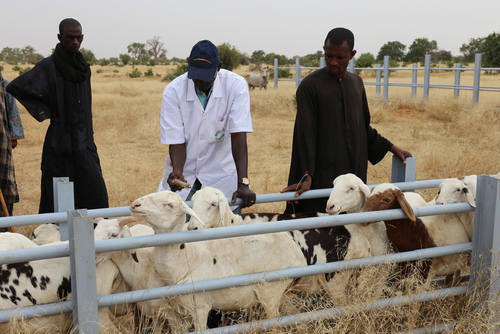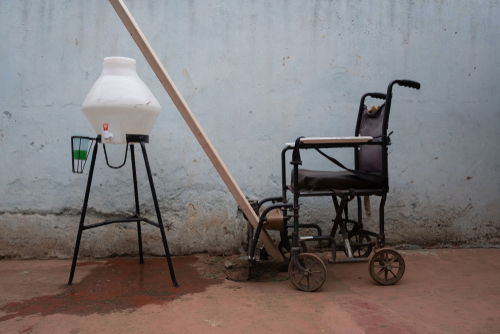November 14, 2022

The pandemic significantly affected women’s age at marriage in India.
Did the onset of lockdowns, school closures, and economic changes due to the COVID-19 pandemic affect women’s age at marriage in India? OHT researchers used data from the National Family Health Survey of 2019-2021 of India (NFHS-5), to explore how the pandemic impacted the age of marriage for women using household and district fixed effects models and propensity-score matching methods. They found a significant increase in age at marriage (0.76 to 3.67 years) for women who got married after the onset of the pandemic compared to those married before the pandemic, representing a 3.6% to 19.5% increase from pre-COVID-19 levels. [SSRN]
Texas faced the worst human tragedy in its history during the COVID-19 pandemic.
With a total death count of 90,000 as of September 2022, COVID-19 is the greatest human tragedy to afflict the American state of Texas. Compared to nations with similar populations and gross domestic products, like Canada and Australia, Texas saw two to three times more deaths. Nearly half of the total fatalities in Texas from COVID-19 occurred after May 2021, when COVID-19 vaccines were available to all Americans. Despite widespread access to vaccines and therapies, the United States leads all high-income countries in COVID-19 deaths. [PLOS Global Public Health]
Single nucleotide genetic variants are associated with sepsis survival.
Sepsis is associated with a nearly 30 percent mortality rate in adult intensive care units (ICUs). Researchers conducted a pioneering genome-wide association study of 28-day survival in adult sepsis patients to identify novel genetic variants associated with sepsis outcomes. Three independent low-frequency variants were associated with reduced 28-day sepsis survival, one of which impacts a protein with possible involvement in the inflammatory response to tissue injury. [Critical Care]
Gender and health are inherently connected in One Health.
While academic use of the One Health framework began primarily after the 2003 SARS outbreak, Indigenous communities have been implementing the One Health concept for centuries. In this long-standing approach, intersectional feminist thought is inherently embedded, pointing to a crucial overlap between gender and health. Researchers emphasize avoiding dangerous binaries and instead suggest embracing the interconnectedness and intersectionality of health, gender, and sexuality that are prevalent in One Health to improve patient outcomes globally. [One Health]
Overdiagnosis and overuse of tests in LMICs are driven by physicians’ fear of conflict and limited training.
Researchers performed a scoping review of 154 studies in 55 LMICs that focus on disease overdiagnosis and testing overuse. Thyroid cancer was identified as the most frequently overdiagnosed condition, closely followed by malaria. The twenty-seven studies that investigated drivers of overdiagnosis and overuse of tests identified individual clinicians’ fears of litigation and conflict with patients, as well as systemic influences like limited training and expanded disease definitions. A small proportion of studies offered solutions, such as creating new diagnostic processes and passing reforms to reduce overtesting. [BMJ Global Health]
Inappropriate antibiotic prescribing for uncomplicated urinary tract infections is associated with greater costs.
Annual costs in the US associated with uncomplicated urinary tract infections (uUTIs) are approximately $1.6 billion. Researchers investigated the prevalence of suboptimal antibiotic prescribing to treat uUTI and its effects on healthcare spending in the US by analyzing hospital data collected between July 2016 and March 2020. Two-thirds of patients with uUTI received appropriate treatment, while one-third received inappropriate or suboptimal treatment. Inappropriately or suboptimally prescribed patients had higher UTI-related costs, especially among those with isolates not susceptible to antibiotics. The researchers note that while the data they sourced was limited, it covered a racially and socioeconomically diverse population within the US. [Antimicrobial Resistance & Infection Control]
Physicians in Egypt are knowledgeable about antibiotics but frequently prescribe them inappropriately.
A cross-sectional study assessing the knowledge, attitudes, and practices among physicians in Egypt regarding antibiotic prescription in children with acute upper respiratory tract infections revealed that while physicians had sufficient overall knowledge about antibiotic use and resistance, antibiotic prescribing decisions were often inappropriate in clinical vignette settings. Furthermore, over three-fourths of the participants did not know that antibiotic resistance can spread from animals to humans. [PLOS ONE]
Destructive floods in Pakistan demonstrate the urgent need for increased water surveillance.
Recent devastating floods in Pakistan have drowned one-third of the country, resulting in extreme food shortages, and increased incidences of waterborne diseases, like diarrhea and malaria, triggering a major economic crisis in the country. More than 1,000 people have died since June 2022, including 416 children. Investment in water level surveillance methods, particularly during monsoon seasons, is critically needed to detect floods before they happen and to issue timely evacuation warnings. [Annals of Medicine and Surgery]
Influenza surveillance can be used to detect non-influenza respiratory viruses.
Scientists conducted a study using the influenza surveillance system in India to detect non-influenza respiratory viruses among patients with an acute respiratory infection (ARI). Six centers across India contributed five to ten cases each of ARI and severe ARI (SARI) to the study every week between September 2016 and December 2018. Over one-fourth of ARI cases and 40 percent of SARI cases were in children under five years old. Respiratory viruses were detected in one-third of ARI and one-third of SARI cases, with viral detection in ARI cases ranging from 17.4 to 53.2 percent. The successful detection of non-influenza respiratory viruses in this study points to the utility of influenza sentinel surveillance systems, which should be similarly leveraged in other low- and middle-income countries. [PLOS Global Public Health]
Climate change has an increasingly large impact on healthcare facilities.
Researchers highlighted the effect of climate change on healthcare facilities (HCFs), which are especially vulnerable to climate-related crises and are predicted to become more overcrowded and resource-limited. A scoping review of articles published between 1979 and 2021 showed that all HCF components, including people, methods, environment, materials, and management, have been affected by climate hazards. Some climate hazards, like heat waves and storms, were found to affect all HCF components, while others like droughts and wildfires affect many, but not all, components. The researchers note that while there was a small number of articles analyzing the interplay between climate change and HCFs, this number has steadily increased since the 2000s, especially after the 61st World Health Assembly in 2009. [Environmental Research]
Image from Canva.











